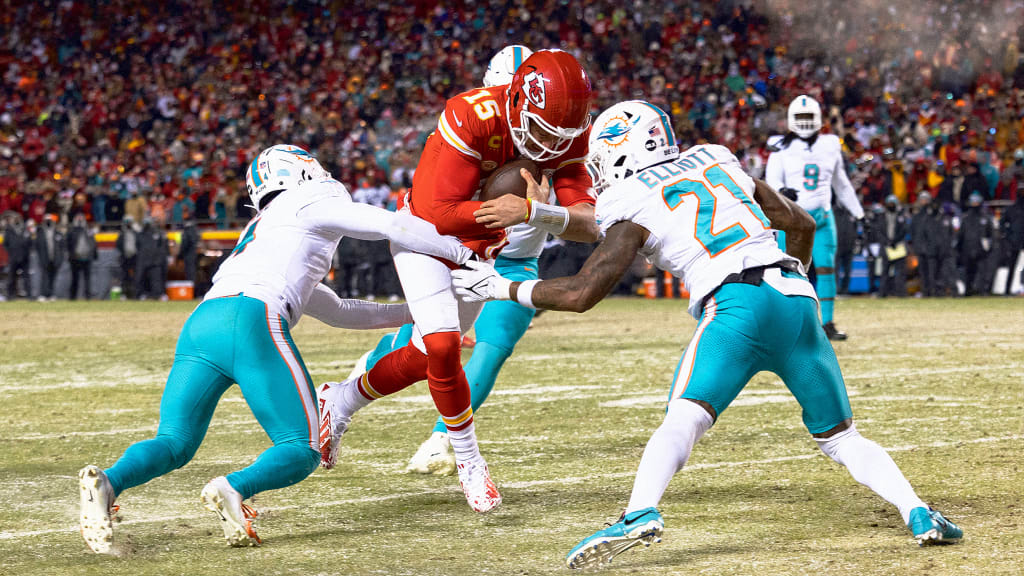The NFL is no stranger to cold weather, especially when it comes to frozen football fields. These frosty battlegrounds can be as hard as concrete, posing dangers like increased concussion risks. Immerse yourself in the icy drama as we explore how NFL teams use inventive methods to tame nature’s chill.
Despite modern technology, some NFL teams still rely on traditional techniques to combat frozen fields. The Buffalo Bills, for example, play on the league’s coldest surface—an unenviable title. As players face biting temperatures, the race is on to ensure safer playing conditions with innovative strategies.
Green Bay’s Battle Plan
Green Bay’s Lambeau Field earned the nickname “frozen tundra” for a reason, but times have changed. Gone are the days of electric coils; players now run on warmth provided by a glycol mix coursing through tubes. This age-old technique keeps the gridiron thawed. Staff work tirelessly to ensure the field is safe, no matter how frosty the weather becomes.
Thawing Arrowhead Stadium
Kansas City Chiefs have embraced old-school methods to combat freezing conditions. At Arrowhead Stadium, the temperature can plummet, making it crucial for the field to be prepared. The heating system, similar to Lambeau’s, was tested in one icy January game against the Dolphins. It was so cold, Patrick Mahomes’ helmet broke!
The heating system turns on automatically when needed. Although it takes a while to warm up, it holds the field temperature at 50 degrees, keeping the turf playable. Different teams have their preferences; Packers like their field cooler at 38 degrees, while others choose warmer settings.
Ravens and Eagles: A Warmer Approach
The Ravens ensure their field remains soft and warm at 50 degrees, ready for any opponent. Contrastingly, the Eagles have taken warming to another level, keeping their field as toasty as 60 degrees. Each team has its unique method, adapting to different strategies and conditions.
This system allows teams to maintain a desired temperature, crucial for game performance. The goal? To prevent injuries and ensure that Mother Nature doesn’t tip the odds against them.
Buffalo’s Cold-Field Challenge
In 2026, the Buffalo Bills will unveil a new stadium, setting the bar for cold-weather arenas. Designed for heavy snowfall, it features a canopy over most seating, preventing weather woes. The field’s heating system can be controlled remotely, adding convenience.
Moving forward, Buffalo’s new stadium aims to blend cutting-edge technology with traditional football grit. Despite advancements, it will remain open to elements, retaining that signature Buffalo chill for visiting teams.
As temperatures in Buffalo can be brutal, the new systems stand ready. For fans, snow shoveling might still be part of the game day experience, with free food and drinks as rewards!
Field Heating: A League-Wide Trend
Other NFL stadiums are following suit, installing similar systems to keep fields unfrozen. Acrisure Stadium in Pittsburgh and Empower Field in Denver have embraced these methods, ensuring that their turf is ready for any weather.
These innovations are vital for player safety. A warm field not only prevents ice but fosters healthy grass growth, making every tackle a little less painful for athletes.
The Role of Boilers and Glycol Mixtures
Utilizing boilers and a glycol mixture, these systems prevent the field from freezing solid—an engineering marvel rooted in simplicity. Massive boilers, coupled with miles of tubing, are the unsung heroes of these fields.
In the chilling depths of winter, it’s crucial to have a reliable system. The glycol mix works wonders, shifting from solid to liquid and back without issue. It’s what keeps stadiums like Arrowhead and Lambeau playing-ready.
While similar across stadiums, each has its unique configurations tailored to local climate and historic performance needs. Smart thermostats adjust heat efficiently, optimizing player safety.
Snow and Ice Battles
Before big games, ground crews tackle snow removal. While covers help, removing ice is hands-on. In snowy places like Buffalo, this is routine work!
From shovels to blowers, these crews ensure the field stays clear. They fight the elements so players can perform at their peak, regardless of weather.
A relentless battle against snow accompanies the game, ensuring the field resembles a grassy arena rather than a frosty wasteland.
Planning for Future Storms
Planning for brutal winters, NFL teams employ comprehensive strategies. They learn from the past to secure better conditions. From snow-proof designs to weather-resistant layers, every detail matters.
The ability to predict and respond to weather changes swiftly is aided by technology. Sensors play a significant role, monitoring field and weather conditions, adapting to real-time shifts.
Despite high-tech tools, the human touch is vital. Groundskeepers’ experience is invaluable in keeping everything functional and safe. Their expertise ensures chilly challenges are met head-on.
High-Tech Solutions in a Traditional Game
Even though traditional techniques still shine, modern innovations are becoming more prominent. Wireless controls and automated responses lead this charge.
As old and new technologies merge, NFL fields become safer. Players can focus on the game, knowing the ground beneath them is reliable.
As NFL teams blend innovation with tradition, players benefit from the safer, warmer fields. These technologies act as the behind-the-scenes heroes, ensuring unforgettable games even amidst winter’s harshest weather.





